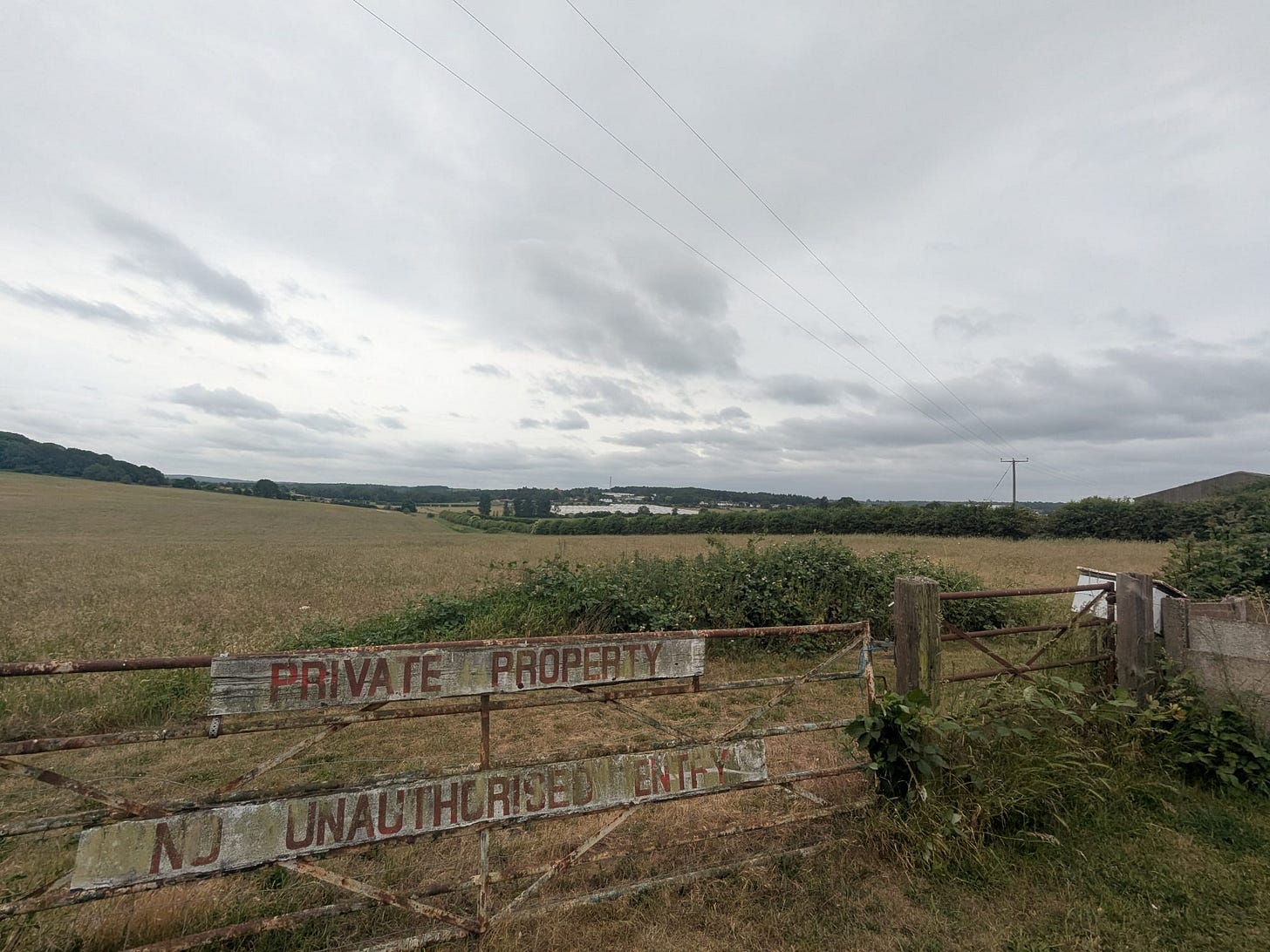“The biggest threat our green belt has ever faced”: Battery storage plan in North Cray sparks backlash.
Residents associations leads strong opposition to a proposed lithium battery facility planned for green belt land near Sidcup.
Proposals to build a large-scale battery energy storage system (BESS) on agricultural land near Manor Farm, North Cray, has been met with rising opposition from residents, local representatives and campaign groups, with one calling it “the most serious threat that our green belt has ever faced”.
The plans, submitted to Bexley Council by the energy company Net Zero Thirty Two Limited, and managed by Firstway Energy, will (if approved) consist of 200 lithium-ion battery containers, housed on currently protected land. If finished, the facility could store electricity drawn from the national grid, and release it during periods of peak demand.
A formal planning application was submitted for the North Cray Road site, with public comments accepted until the 21st May 2025. South of the River understands some 260 objections to the plans have been made by locals. The application includes plans for 2.5-metre boundary fence, equipment up to 7 metres high, and a direct connection to the grid to Hurst electricity substation.
According to the developer, the 200MW facility would have the capacity to power some 647,000 homes. A second site, near Bexley Village, is expected to be submitted in the coming weeks.
Fire safety fears
Local opposition, which has been coordinated by the North Cray Residents Association (NCRA), has focused on a number of concerns, but chief among them are concerns of thermal runaway fires that the association say are associated with similar lithium-ion battery installations.
Peter, a lifelong resident of North Cray, and a retired engineer, said: “The batteries, they’re like a bomb, if they go up, you cannot put them out.”
A leaflet, distributed by the NCRA, focuses on the chemical risks in detail. It says that the lithium battery fires “produced hydrogen and oxygen, further fuelling the fire,” and that “the subsequent build-up of gas and pressure will then lead to explosions.” It also raises concerns over toxic gases, water contamination, and the use of second-hand vehicle batteries which it claims may be repurposed for the site.
South of the River has been unable to independently verify these claims, and they come from material published by the residents association.
“Grey belt” classification attracts criticism
The proposed development site currently lies within land designated as ‘green belt’, which has historically been protected from industrial development. However, documents supplied by the developer argue that the site qualifies as ‘grey belt’, a term introduced under updated planning guidance by the current government.
Louie French, the Conservative MP for Old Bexley and Sidcup, formally objected to the plans stating:
“This is precisely the sort of inappropriate development that green belt rules are designed to stop. But Labour’s 'grey belt' loophole has given developers the green light to develop and industrialise Bexley’s precious remaining countryside.”
He continued: “This is high-quality farmland in the middle of Bexley’s green belt [...] the wrong place to install up to 200 industrial-style battery containers.”
The MP also expressed concern over fire access to the site saying: “I'm also highly concerned by the inadequate fire safety measures taken on the site, especially given its proximity to homes, businesses and an important community centre."
Long-standing land use and environmental concerns
Opponents to the plans also argue that the land has deep historical and agricultural roots.
Peter, the retired engineer, told South of the River: “This land has always been in agricultural use, as long as I remember.”
David Jones, Chair of the North Cray Residents Association, said: “There are hedgerows there that have been here since the Saxons. It’s the biggest threat our green belt has ever faced.”
The residents’ association leaflet explains that the land was once part of the North Cray Place Estate, owned in the 19th century by landowner and peer, Lord Bexley, and forms part of the boundary between North Cray and Ruxley, said to date back over 1,000 years.
The leaflet further warns of the loss of biodiversity, including “bats, a kestrel/hawk that nests in the ancient Chalk Wood,” and “badgers on most of its land.” The proposed access road, lined with old hedgerows, would likely be damaged during a 12-month construction phase that would see heavy vehicles using the track daily.
Traffic disruption and construction impact
Opponents are also concerned about the logistics of the proposed development, focusing on the impact on the local road network.
The NCRA leaflet says: “In order to connect the site to Hurst electricity sub-station in Bexley the entire length of the North Cray Road from Bexley to the St James Way U-turn will have to be dug up to lay cables which will take months causing traffic chaos.”
A local councillor, Cameron Smith, took to Facebook, in a video, saying: “Since the Labour Government changed the National Planning Policy Framework, these are the sorts of applications that we are going to see a lot more of. This is just one of three in the area, with two more up near Bexley Village.”
He continued: “Developers are trying to use the ‘grey belt’, a new concept invented by the Labour government [...] to argue that this high quality agricultural land [...] is, in fact, up for development.”
The planning application (Ref: 25/00833/FULM) is currently under consideration by Bexley Council.
Further information and a local campaign website by NCRA can be found at Protect Bexley.
South of the River contacted Firstway Energy for comment. They did not respond by the time of publication.
UPDATE: Firstway Energy said: “With regard to fire and safety, lithium-ion is used in a number of day-to-day products including mobile phones, wireless headphones, laptops, tablets and electric cars; and lithium-ion ESS are currently the most common energy storage system within the UK. The proposed developments have taken into account the guidance produced by the National Fire Chiefs Council.”








This is a horrendous idea Premium farmland is far too important to be used for this proposal